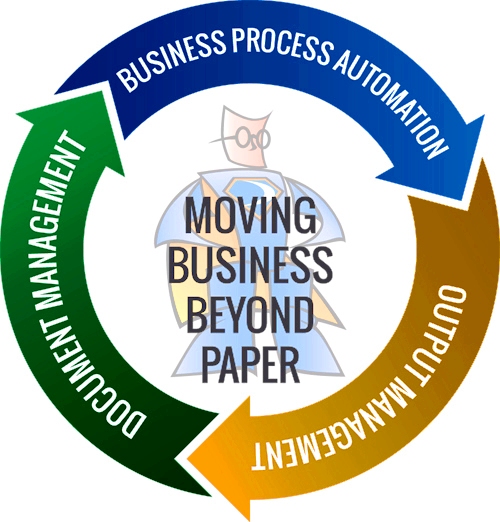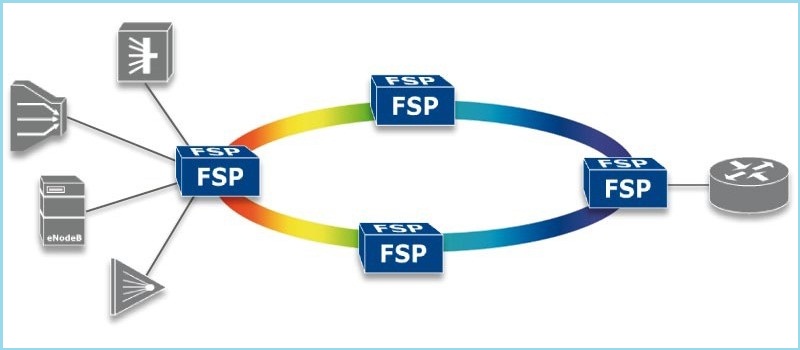


Today, customers are looking for the best than the better in everything and want it quick along with seamless digital experience, so will it happen, but how?
Let us look how digital experience and digitalization will help us improve our business.
We should thank companies like; Apple and Amazon who anticipates that every organization should deliver products and services rapidly, with a seamless user experience.
Consumers are looking for the ablity to login to their electricity account and check their electricity consumption online. They go to the telecommunications dealer and to buys a smartphone and expecting it to activate instantly. They even looking at the banks to approve their personal or mortgage loan instantly. They expect instant approval of services whether it private/public sector.
They even wonder why they need to provide identification proofs and financial statements to the banks when their employer is crediting their pay checks every month on-time.
Customers are demanding for instinctive interfaces, , personalized treatment, persistency and consistency, real-time accomplishment, negligible errors and 27/7 availability. This behavior of the consumers are changing rapidly they are looking for more comforts and customizations.
It’s more than a greater customer experience, nonetheless; when establishments get it right, they can as well tender aggressive pricing because of lesser overheads, enhanced and well equipped operational controls, with less risk.

Enchant the Customer
To catch hold of their consumer expectations organizations must gear up the process of digitization of their business. But it should be more that the automating a current process. Organizations must rethink to reinvent the operations process, including a quick decision making strategy, permit the less number of required steps, speeding up the documentation process parallel efforts should be taken with fraudulent and regulatory issues.
Operating models, skills, organizational structures, and roles need to be redesigned to match the reinvented processes.
Operating models should be accustomed and redesign to facilitate customer insights better performance tracking capabilities, and decision making abilities. The process of Digitization often requires new skills combined with that old wisdom.
Nevertheless to say that There are huge benefits by the digitizing processes, companies can save cost upto 90% and TAT (turnaround time) enhanced by several orders of magnitude.
For example one financial institution digitized its mortgage application, assessment process decision making process, which gave the organization of ability to cut the cost per 70 percent and reducing the time to preliminary documents approval from numerous days to just in minutes process.
A telecom service provider can up with a system where customers get the feasibility to activate their new phones without the involvement of the backend department. Through digitization process insurance companies automatically arbitrate a large share of its simple claims. Upgrading from paper and manual process with software allows organizations to collect the required data automatically which also improves the process performance, while reducing the cost and risks. Digitization also helps manager to address the issues before they become critical. Supply chain quality issues can be acknowledged and resolved by monitoring purchaser business activities and feedback.
Many top organizations are reinventing their processes, testing the whole lot of things connected to an existing process and renovating it using cutting edge digital technology.
This approach is done through series of process combining advanced and traditional process, like lean and agile.
Hit Factors
Companies in every sector can gain knowledge from the practices conducted by other organizations that have implemented this successfully.
The process of Successful digitization implementation starts by developing a scheme for the future state for each process keeping aside the current constraints and reducing the turnaround time from days to minutes. Once the future scheme has been developed constraints will be revisited. Organizations should always focused to confront each constraint.
Recurrently checking the consumers experiences not only boost effectiveness in definite areas but also helps to address some burning issues. But this is not a complete recipe to deliver great user experience. To enrich the user experience the digitization team should receive spport from every corner involved in user experience.

Tackle the End-To-End Customer Experience
But it will never deliver a truly seamless experience, and as a result may leave significant potential on the table. To tackle an end-to-end process such as customer on boarding, process-digitization teams need support from every function involved in the customer experience.
To achieve this, some companies are creating cross functional and start up style units, which is way to involve all the stakeholders and users concerned with the end-to-end user experience. Members are often collaborated to achieve better lines of communication and guarantee a true team effort.
Build Capabilities
Resources on Digitization are in short supply, so successful portfolios put emphasis on construction in house capabilities.
The aim is to provide excellent service with highly skilled staff with the intention that can be called upon to digitization quickly. Organizations should hunt for faculty externally to meet the requirement for new roles, and skill sets, like user-experience designers and data scientists . To achieve this, managers selected in the first wave to pilot the transformation must be carefully picked, and he/she should be ready to commit with the organization for a long time well trusted in the organization,. It is also essential that the staff has the ability to build the necessary technology components in a high proficient way so that they can be able to be reused across processes, maximizing economies of scale.
Enter Blog Details here...
...
Read More

Two development firms in Big data and Analytics space; DATA -Tableau and Hortonworks saw a critical time when their data released missed the forecast by 0.05$, and dropped their stock by five percent. This is what going frequently with companies and no one has any clue on what is going on with BI business Intelligent and Hadoop space. Should companies run from BI and Big data space before it completely collapses?
Instead of focusing on the sensational headlines; the investors and technology corporate leaders should also focus on the missed forecasts as they leave some clue on some important analysis and trends which will help them to grow.
While the companies need to look at their results in the context of the industry as a whole; which will show the exact results as per the worldwide analysis. As per the Gartner’s analysis for worldwide dollar-valued IT; it says that IT spending has grown in 2016 at a flat percent of 0.0. However, 35% of growth is fairly incomparable by this benchmark, and if we look at Hortonworks’ results for this gone quarter: then the total revenue grew by 46% year over a year.
This means, the Investors’ expectations are growing high and even they are tough to manage. To manage this kind of issues the industry observers and technology buyers should standardize the performance of both organizations against the rest of the industry before they make a knowledgeable conclusion.
As per recent survey —Teradata also reported revenue and its business shrink by 4% Year over a year. Leaving other things remaining equal, the analysis says that Hortonworks could generate more revenue than Teradata by 2020.
Let’s look on some of the data analysis pitfalls you should avoid before you are sucked in.
Confirmation Preference
If you have a proposed explanation in your mind; but you are only looking for the data patterns that support it and ignore all data points that reject It. Then let us see what will happen.
First, analyze the results of that particular patterns performed well and find the conversion rate on the landing page. This will help you to really perform high than the average you think. By doing or following such analysis you can use that as the sole data point to prove your explanation. While, completely ignoring the fact of those leads will qualify or the traffic to the landing page will be sub-par.
There is again a thumb rule which is very important to remember, you should never approach data exploration with a precise conclusion in mind; as most of the professional data analysis methods are built in a way that you can try them before you actually go and reject your proposed explanation without proving it or to reject it to the void.
Correlation Vs Cause
Combining the cause of a fact with correlation somewhat will not show any action. While, when one action causes another, then they are most certainly correlated. However, just because two things occur together doesn’t mean that one caused the other, even when it seems to make some sense.
You might find a high positive association between high website traffic and high revenue; however, it doesn’t mean that high website traffic will be the only cause for high revenue. There might be an indirect or a common cause to both that may help to generate high revenue more likely to occur when high website traffic occurs.
For example, if you find a high association between the number of leads and number of opportunities from a classic B2B data quest, then you might gather a high volume of leads with a high number of opportunities.
Here are some more things that you need to watch when doing data analysis:
• Do not compare unrelated data sets or data points and conclude relationships or similarities.
• Analyze incomplete or “poor” data sets and make proper decisions based on the final analysis of that data.
• Do not analyze the data sets without considering other data points that might be critical for the analysis.
• The act of grouping data points collectively and treating them as one. Which means, looking at various visits to your website and creating unique visits and total visits as one and inflating the actual number of visitors and converting it to the best conversion rate.
• Do not ignore any simple mistakes and oversights which may happen anytime.
...
Read More

Digitalization, digital networking, research, network automation, education and educational networks; are all these the buzz words of recent technology and for education institutions? Why everyone is talking about digitalization and networks, how are these both interconnected; and what is network automation and education networks are what we are going to know on this blog today .
While what the smaller research say about the education networks and individual campus networks; we can say that both stand for the same aim which is implementing education through current network automation strategies and tools. Are these tools, strategies, and significant efficiencies or the network automation wave more hype than these smaller institutions?
Let us look at some of the regional networks, how they are succeeded and what are the challenges involved in this path of deploying various network automation with relatively small and outsourced staff and support. Also discussed will be the experience of working with this diverse technology and how it increased the awareness about the possible proposed value of network automation and how regional’s can assist smaller schools through this network path.
Digital learning and collaboration have become an essential part of today’s education. From k-12 schools are implementing the methods of digital learning. These blended learning methods and one to one computing programs are reshaping the classroom studies and engaging more students to become tech-savvy’s. The higher educational institutions are announcing BYOD- which means bring your own device concept; students are also allowed to use their smart phones, laptops, tablets and other gadgets to be connected. This helps the institutions to meet the unprecedented demand for connectivity with high performance and to get recognized as highly reliable campus and data network center solution provider.

Challenges:
The hike of latest technologies, mobile devices and growing appetite for applications and rising security concerns are placing new burdens on educational networks. To meet these challenges, schools are expanding their networks to meet student and faculty expectations for high performance, highly reliable, and always-on connectivity.
The school network is always mission-critical, and downtime will be more and un-tolerable when class lectures, research projects, assignments are involved. We can see diversity and richness using these educational applications as learning is increasingly leveraging interactive curricula, collaboration tools, streaming media, and digital media. The success of the Common Core Assessments hugely depends on connectivity. The higher education, universities, and colleges that have poor quality, non-ubiquitous network access, quickly discover that this is affecting their registration/enrollment rates.
The other challenge is with the number of Wi-Fi devices and the types of devices students bring to a university or college campus; Students commonly have three or more devices like; smartphone, tablet, laptop, gaming device, or streaming media player and expect flawless connectivity. While higher education is deploying wireless IP phones for better communications, IP video cameras to develop physical security, and sensors for a more efficient environment. The projections for the Internet of Things, which will connect hundreds of billions of devices in a few short years, are nothing short of staggering.
The trends that educational networks are looking today for students, faculties and administrator expectations is that of for the connectivity which is rising and the complexity and cost of networking are also growing exponentially. In addition to this growth, the “adding on” to networking equipment for old designs is causing the network to become ever more fragile. IT budgets are tight, and technology necessities are growing faster than the funding.
What if schools took a step back and had a unique opportunity to proactively aim their networks to meet the challenges which hit today and tomorrow? What if deploying the network was simple, not a manual, time-consuming chore? What if your initial design and build could scale for years to come, without having to build configurations on the fly every time? What if networks were easier to plan and build, configure and deploy, visualize and monitor—and had automated troubleshooting and broad reporting?
The tools which are of high configurations help the educational networks are Juniper Networks, HP, CODE42, DLT, EKINOPS, Level 3, cloudyCluster, OSI and much more. It’s time to update the educational institutions towards the design, building, and maintaining the network and taking the advantage of automation and modern management tools to create scale, consistency, and efficiency.
...
Read More

Corporate leaders recognize that market growth is dependent on customer-centric service delivery models which demand rapid delivery of high-quality software systems. However, there are no specific theories to measure the readiness of the organizations to adopt DevOps culture. Today’s customer has become smart, and Organizations are changing their stance for faster application delivery to live up to the customer expectations. But, organizations encountering with operations, process, and development, will in turn heap up challenges in terms of aligning with governance and strategy.
Assessing success in a business context is acute, but because DevOps isn’t a formal framework, organizations can still have little way of guidance to assess its efficiency. But this can be a little delicate activity when organizations try to measure systems which are output-based or used on some metrics or methods that incentivize behaviors counter to a DevOps culture.
So far it was assumed that DevOps isn’t easy and it can be a struggle to manage and implement it productively. Today there are several approaches made it easy for the organizations that are looking towards adopting DevOps. Through DevOps Assessments Program Organizations can identify, manage, and implement DevOps principles productively. DevOps has demonstrated serious effectiveness for accelerating software development and rationalizing the interaction of operations and quality assurance (QA) departments. DevOps imposes demands that every organization needs to be ready to address.
When adopting DevOps, organizations should consider new approaches identifying and implementing DevOps assessment program. Since DevOps is all about building a robust culture to enhance IT service deliveries, this will include deliberation for actionable metrics that are open, transparent and promote collaboration. DevOps is undoubtedly an extension of agile and lean principles. It is a revolution resulting in an evolution of agile that extends the practice of agile development for speedy delivery. From the formation of ideas or concepts to production and overcome the obstacles of the walls between operations, development, and business via co-operation & collaboration practices.
Let us look at some assessments which help organization for DevOps Transformation
Implementing DevOps practices will certainly bring value to the businesses as this can be a buying point where organizations are leaning towards implementation of DevOps. This is because the software development cycles take years of coding and testing before releasing their product and requires a lot of resources to bring the required output of a product. But, what if when sales are not guaranteed and issues such as defects and bugs are raised once the product is out. Such issues will definitely hit the success of the product and ROI. This is where the implementation of DevOps principles can answer to the above-mentioned issues.
When DevOps is included to a new development cycle, it works differently and supports the developers and Quality departments and drives the resources on a much faster schedule to test and support each new release. To make sure the process runs all smooth, IT Companies must install the latest versions of software releases on one or multiple servers in the data or cloud centers, and interconnecting storage, performance monitoring, supporting databases, and other resources.
The IT corporations should thoroughly evaluate the application requirements, and approve the infrastructure and servers, and perform the deployment for the approved product. Such firm processes work well when the organization's staff works on occasional software releases.
To implement DevOps principles an organization should be capable enough to support the processes, tools, and the resources to keep DevOps productive. Balancing the resources and demands of the project can be difficult for small businesses at the initial point. However, Small businesses can often outsource the application development or invest in applications like Salesforce rather than in-house CRM package.
Organizations with 50 to 250 may not be able to adopt DevOps principles. Whereas, Organizations with more than 1,000 employees may have more advantages.
DevOps is a mix of people, tools, and processes. It is not an exercise or an event to implement it successfully with one software, tool or a plan taken out from a book.
With a comprehensive DevOps assessment and supporting tools, organizations adopting DevOps can:
• Quickly measure and establish clear business terms with effective DevOps processes like continuous delivery and parallel development methods
• Support cross-functional teams around business value conception and continuous development
• identify capacity gaps and initiate the remediation policies to achieve targets and goals
• Eliminate existing practices that counter a strong DevOps culture to prevent the flow value to the businesses and customers
Every company has its own approach towards adopting DevOps and implementing. Adjusting and adapting the people, tools and processes to meet the organization's unique goals is the main aim to adopt DevOps. In this process of adopting DevOps, hiring developers who are familiar with DevOps workflows & cycles, organize IT staff capable of accommodating dynamic release schedules, implementing a suite of tools facilitate collaboration between developers, QA, and IT and applying strong business management that can drive DevOps adoption.
Today’s corporates often evaluate DevOps potential and insert it by slow degrees, developing proficiency and skills with teams working on small and less prioritized projects. Then they steadily involve these skills and tools to work on critical projects over time to bring the overall success of the product or software.
...
Read More